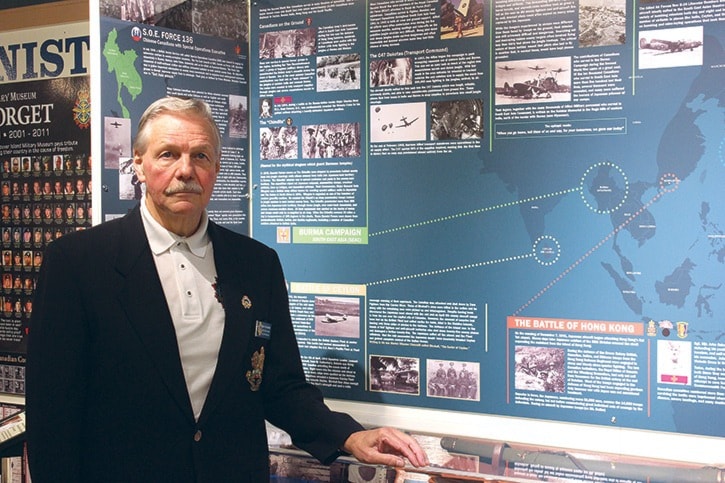During the Second World War, more than 10,000 Canadians served all over Asia.
Unfortunately, it’s a fact that very few Canadians know about.
“We do a terrible job of recognizing the efforts of our troops,” said Brian McFadden, vice president of the Vancouver Military Museum, which documents the Canadian war effort in Asia on a permanent display.
Canadians played an important role in Asia during the Second World War according to McFadden, who spent months putting the permanent display together. He said Canadian troops were stationed in Hong Kong, Singapore, India, Okinawa, Japan, and what is now present-day Indonesia, Myanmar and Sri Lanka.
“One of the areas that Canada specialized in was radar,” McFadden said. “We were one of the leaders in understanding and training in radar ... and the Allies were desperate for people with radar experience.”
Canadian pilots were used in Burma, now Myanmar, where they provided supplies to British troops on the ground.
“Burma was the first major war effort where an army was going to be supplied from the air,” he said. “The [Allied forces] needed huge air resources and Canada had two squadrons of planes dropping food.”
In 1941, nearly 2,000 Canadian troops found themselves stationed in Hong Kong with British troops from India and the United Kingdom.
“Britain had thousands of troops in Hong Kong, but they needed re-enforcing,” McFadden said. “Troops who were being sent to Hong Kong never thought they were going to be fighting,”
On the same day that the Japanese attacked Pearl Harbor, they also attacked Hong Kong, which became known as the Defense of Hong Kong and claimed the lives of 290 Canadian troops. The attack forced the Canadians and other Allied troops to surrender and those Canadians who did survive were sent to Japanese labour camps, where many died.
A number of those involved in fighting in Asia hailed from Vancouver Island, including Charles Hoey of Duncan, who was awarded the Victoria Cross after taking down a number of Japanese in Burma before being killed. McFadden said he does not know how many people from Nanaimo or the Island were sent to Asia, but that Canadians were often given no choice as to where they were deployed.
“The reason the vast majority of Canadians ended up in Asia is because in the armed forces you go where you are told to go and you do what you’re told to do,” he said.
Through his research, McFadden learned about the story of Leonard Birchall, a pilot and squadron leader who patrolled the waters near Sri Lanka in 1942. During Birchall’s second day on patrol, he noticed a large Japanese fleet approaching Sri Lanka and informed the Allied forces. McFadden said Birchall’s efforts prevented a Pearl Harbor-style attack on the Allied forces stationed in Sri Lanka.
“What he did was alerted the Allies. They got all their aircraft guns and when the Japanese got there it was too late. They never invaded because the Allies were ready,” he said.
According to McFadden, part of the reason why Canada’s efforts in Asia were not well publicized at the time was because many Canadians served under the British flag.
“A good many of them joined the British Forces and they would be considered as being British,” McFadden said. “That’s one of the reasons why Canadians weren’t mentioned or recognized in Canada because the British included them into their numbers.”
Today, there are Canadian troops buried at cemeteries throughout Asia, including Hong Kong and Singapore.
